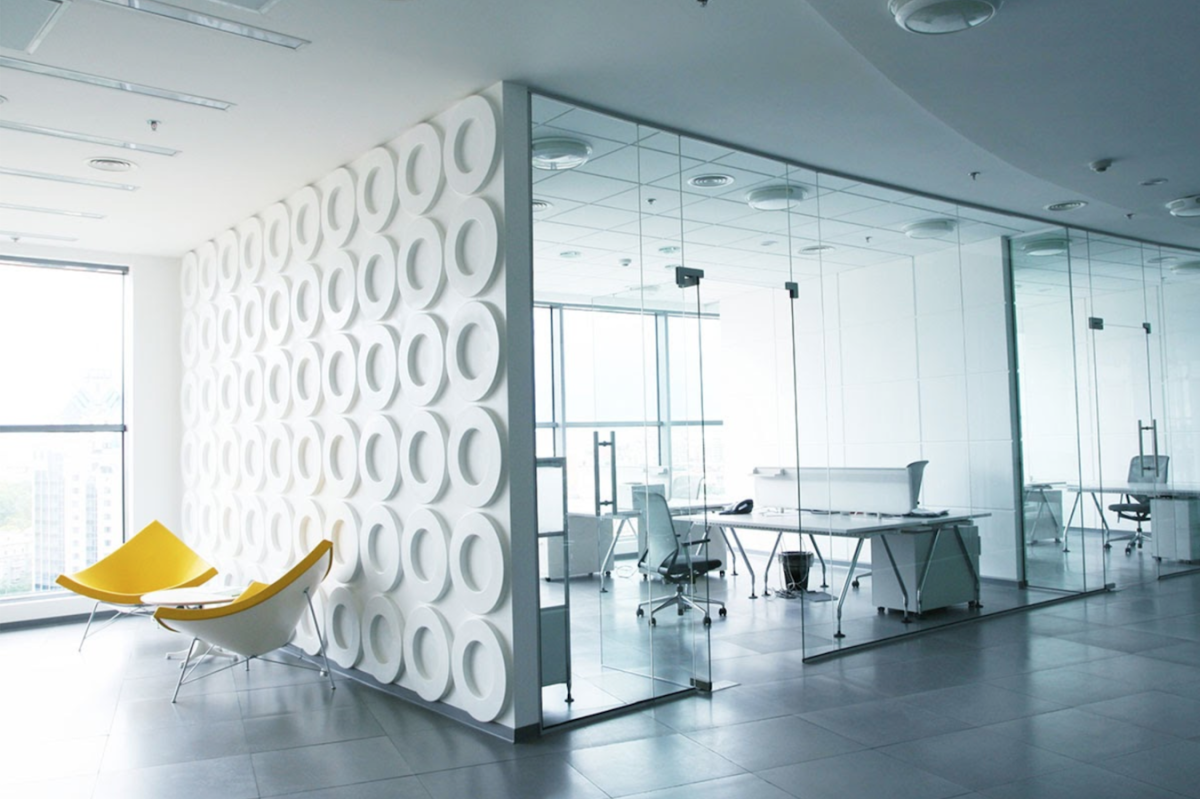Office space design in India has experienced a significant transformation in recent years, driven by evolving trends that prioritize employee well-being, collaboration, and productivity. From open-plan layouts to green buildings, technology integration to employee wellness considerations, Indian workplaces are embracing these changes to create a more engaging and conducive work environment.
Open Plan Layouts: One of the prominent trends in office space design is the shift towards open-plan layouts. Traditional cubicles and closed offices are being replaced with open workstations and collaborative spaces. This design fosters better communication, teamwork, and innovation among employees. It breaks down barriers and encourages interaction, ultimately leading to enhanced productivity and creativity. Open-plan layouts also promote a sense of transparency and equality within the organization, fostering a more inclusive work culture.
Green Buildings: Another significant trend in office space design in India is the focus on green buildings. Sustainability has become a key consideration for organizations across various industries. Green buildings employ energy-efficient measures, renewable materials, and eco-friendly practices. They incorporate natural lighting, efficient ventilation systems, and water conservation techniques. Green buildings not only reduce the organization’s environmental footprint but also provide a healthier and more comfortable workspace for employees, leading to improved well-being and productivity.
Technology Integration: With the rapid advancement of digital tools and automation, workplaces are adopting smart technologies to streamline operations and enhance efficiency. From smart lighting and temperature control systems to advanced audio-visual equipment and integrated communication platforms, technology is revolutionizing how workspaces function. These advancements enable seamless collaboration, remote working capabilities, and real-time data analysis, empowering employees to work more effectively and efficiently.
Employee Wellness: Organizations are recognizing the importance of creating a work environment that supports the physical, mental, and emotional well-being of their employees. This trend includes the inclusion of ergonomic furniture, breakout spaces for relaxation and socialization, and the integration of wellness amenities such as gyms, yoga studios, and meditation rooms. Such initiatives promote work-life balance, reduce stress, and contribute to a happier and more engaged workforce.
Flexibility and adaptability: Many organizations are embracing agile workspaces that can easily accommodate changing needs and dynamic work styles. These spaces feature modular furniture, movable partitions, and flexible layouts that can be customized to meet evolving requirements. The ability to adapt the workspace to different tasks and team sizes allows for greater efficiency and collaboration.
Biophilic Design: This design philosophy incorporates natural elements such as plants, green walls, and outdoor views into the workplace. Biophilic design has been shown to enhance productivity, reduce stress, and improve overall well-being. It creates a connection with nature, which is especially important in urban environments where access to green spaces may be limited.
In conclusion, office space design in India is evolving to align with changing workplace dynamics and employee needs. The shift towards open-plan layouts, green buildings, technology integration, and employee wellness considerations reflects a growing focus on collaboration, sustainability, productivity, and well-being. These trends not only create a more engaging and pleasant work environment but also contribute to the success and growth of organizations in the long run. By embracing these design principles, Indian workplaces are positioning themselves as modern, innovative, and people-centric, ultimately enhancing employee satisfaction and driving organizational performance.

